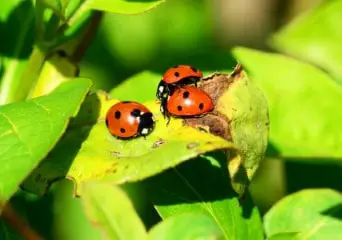Ladybugs are some of the most loved insects in the world. These little spotted creatures are popular for a number of reasons and as such, it’s no wonder that many people are interested in buying ladybugs and want to know how to utilize them and take care of them.
But the big question is…
Where can you buy or get ladybugs?
Of course, for the most adventurous of people, the answer is simple. Get a jar and go ladybird hunting out in the yard. For others, ladybugs can and are commercially harvested. Ladybug harvesters capture ladybugs by fall and prepare to sell them to organic gardeners all over the globe.
Guide to buying Ladybugs
The Wonders of Nature
There are many reasons why you might be interested in buying ladybugs. They’re known for a lot of good things. To farmers, they’re very important because they eat all the pests that ruin their crops.
For many others, these insects are considered to be harbingers of good luck and prosperity. With vibrant colors and a multitude of dotted patterns, ladybirds are simply fascinating insects.
And lastly, since these bugs are not at all harmful to humans, parents feel at ease with them.
Buying Ladybugs – Where Can You Buy Ladybugs?
There are various options available for you when it comes to purchasing ladybugs – depending on what you want to use them for.
The Internet Method
In this digital age, almost anything can be purchased easily with just a click of a button. Ladybugs are no exception. Go through the selections provided by facilitators such as eBay or live Ladybugs on Amazon, which sell anything one could ask for.
Conventional Means
For the more traditional of people, catalogs and commercial vendors do exist as well. Depending on the insects that are harming the crops, simply choose from the best variety and wait for the ladybugs to be delivered.
However, one thing to note, especially for the novice in the trade is that hungry ladybugs have a tendency to disperse upon release, as they roam around in search of prey.
It is best to get the preconditioned ladybugs through the vendors. These are insects that are fed before being shipped to your location, to prevent them from flying away.
Buying Ladybugs – How Many Ladybugs Do I Need to Buy?
On a side note, it’s important to know about the release rates of ladybugs. This indicates the number of ladybugs that can potentially cover a specified area.
For instance, a gallon of ladybugs is capable of covering 1 to 5 acres of land with little difficulty. Make an informed decision about the quantity that you require depending on the space of your garden and/or field.
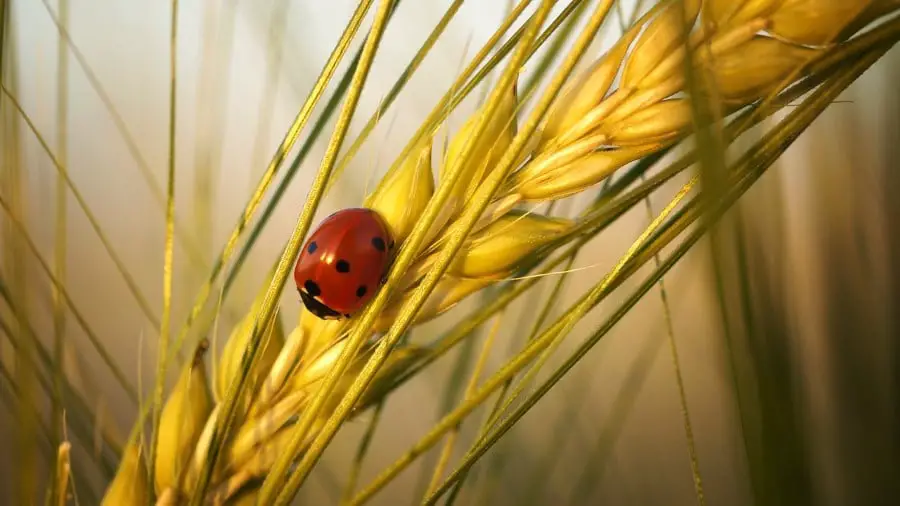
What Type of Ladybugs to Buy
Now that the seller has been established, determine the exact type of ladybug you require. Many factors affect this choice. These include the maturity of the insect and the environment in which the ladybug can easily be sustained.
Age Matters
One thing to know is that regardless of the stage in life, ladybugs are known to eat other insects, most particularly soft-bodied aphids. Be it in the larval form, or a fully formed adult, they are extremely useful.
Adult ladybirds do have the advantage that they lay eggs in clusters, nearly up to 50 at a time. As they reproduce and give off more offspring, you get to have more live ladybugs.
Then there’s also the option of buying eggs that can be planted – to hatch where there’s the greatest concentration of pests.
Whatever the preference, differentiate between the insects before making the purchase. Adults are the quintessential ladybugs we’re all familiar with.
These are the red or orange-tinted insects decorated with black spots and markings.
Larvae are beetles that are mainly black and are covered with orange spots on their surfaces.
They’re nothing like their more mature state, rather if one does not have prior knowledge about them, it would be difficult to know that these are even ladybugs.
But upon closer inspection, their spotted bodies do appear to have a similar likeness. If you find a Ladybird Larvae, you can identify it here for most species.
Their New Home
Certain species are suitable and more liable to thrive in a particular region or climate. For example, the Harmonia octomaculata, a spotted species of ladybird would be appropriate for use in tropical areas.
Similarly, another species Harmonia conformis would be a better choice for temperate regions.
In addition to the weather conditions, the range of crops and fields in which the bugs are released also matters.
Before making a purchase, research the species of the beetle to understand if it will thrive in a given land or not.
The best choice when shopping for ladybugs would be to select the ones native to your land. Even though the exotic species might appear as a more attractive option, they’ll only act as a competition for the local ladybugs.
What if you received Purple Ladybugs?

The Pest You’re Trying to Control
Another interesting point to think about is the pest that is the root cause of trouble in any garden. Which insect is the most cumbersome to your plants? Is it the aphids or the whiteflies?
Because one needs to get ladybirds that would primarily target the insects that are hazardous, instead of feeding on harmless creatures.
The eating habits of lady beetles do vary to some extent, due to which it is pertinent to make a thorough study beforehand.
When Should I Release the Ladybugs?
Timing plays a very crucial role when it comes to releasing the ladybugs. If you release the bugs at the wrong time of the year, it might cost you valuable time and money, without yielding the results you desire.
Here are a few tips to keep in mind regarding the seasons that are most favorable for releasing ladybugs.
Seasonal Release
Nearly all year-round ladybugs thrive and work towards diminishing the population of aphids and other plant-eating insects. Due to this, you can conveniently release the ladybirds in your infested crops in just about any season, except one…
Winter is that time of the year when almost every animal and insect go into hibernation. The same can also be said for ladybirds. Rather winters hold more importance to the ladybugs than simply a time to go into a deep sleep. It is also when the ladybirds mate, just before they hibernate.
An interesting fact is that ladybugs rely on their prey, the aphids, to determine if winter is coming. When the aphid numbers decline, it serves as a signal that winter’s nearly here.
This causes the ladybirds to assemble and converge to find their mates. This mating act is referred to as the ladybug bacchanalia, and following it, the little creatures enter hibernation.
Pests vs Beetle
The more abundant the aphids are, the more time it will take to get them back under control if you succeed at all.
On the other hand, if you release the ladybugs a tad too early before there are enough pests to feed on, you run the risk of losing the ladybugs.
Knowing that the average beetle eats about 50 or so aphids per day, this can pose a serious problem because if there is not enough food to go around, the lady beetles will go off in search of better options.
What one needs to do is find the middle ground. When the pest population is neither out of control nor are there too few of them to sustain the ladybugs. Find a balance that delivers the best results.
Time of Day
It might sound logical to release the ladybugs during the daytime when there’s plenty of light to see where the pests are and where the ladybugs need to go. Not only that, but ladybugs are most active during the early hours, so surely that’s when they will work the best?
But the opposite actually holds true. If the ladybugs are released when the sun is shining, they have a tendency to scuttle away.
It has been observed that evening time’s better suited for releasing Ladybugs. The reason behind this is that the darkness of the night will allow the ladybugs to settle in better to the habitat.
The Perfect Ambiance
While the heat of the sun promotes the ladybugs to leave your garden, the cool temperature at dawn works in your favor by preventing this.
The weak light allows the beetles to settle down in their new habitat and prepare for the sun to come up before they make their ascent. Another positive aspect is the morning dew on the plants that the ladybugs use to hydrate, thereby keeping them from leaving.
Following sunset, when the temperature has once again cooled down and there’s little light to see, the tiny beetles are sure to find a place to stay the night. Both of these times are quite favorable to ensure that the ladybugs stay a while upon their release.
Stage of Life
The factor relies on the age of the ladybugs. If you happened to buy adult bugs, then there are many benefits to their release.
Not only are they in their sexual maturity but they’re also quite capable of laying eggs for the next crop of larvae to hatch forth and devour the aphids. In such a case, it’s best to release them as soon as can be near the pest-infested crops.
However, if storage is required, it’s advised to keep them in a darkened space with perhaps a small supply of honey.
On the other hand, if you went with the option of eggs, the supply should be divided into batches as ladybug larvae are prone to cannibalizing.
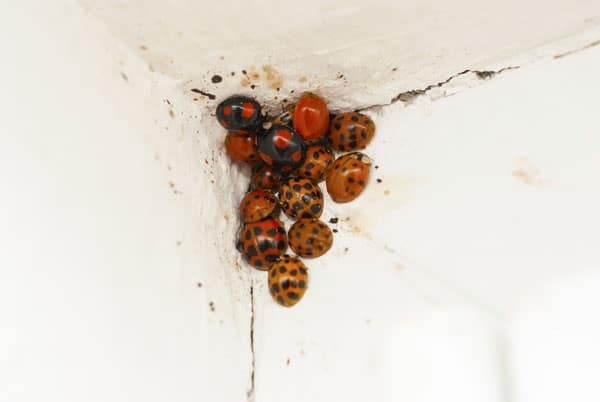
What to do if Ladybugs infest your home?
Where to Release Ladybugs?
The obvious and most reasonable choice is near the aphid and bug-infested area. But one cannot simply open the containers sheltering the bugs and expect them to find their targets and get the job done. Ladybirds need to be gently guided and released where they’re needed.
Keep Away from Insecticides
This goes without saying that since ladybugs are indeed insects, it is prudent to keep them away from any and all plants that have been sprayed down with insecticides.
This will most likely cause the bugs to die out before they can get any work done.
Plant of Choice
Release the ladybugs where there are actual signs of infestations. Difficult as it is already to keep the ladybirds in place, using them on unaffected plants is a complete waste of time and effort.
They’re also more likely to stay around plants they like already.
Dampen the Area
After the long hours of the journey to get to their new habitat, the ladybugs are likely to be dehydrated. Spray them with a fine mist of water when they arrive.
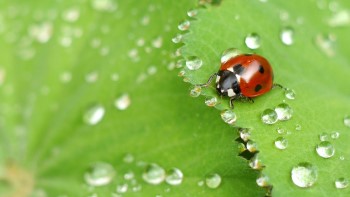
Similarly, prior to releasing them onto the plants, spray the selected plants with adequate water. Once the ladybirds land on them, they have reason to stay by drinking up until they find their way to the aphids.
Ladybugs can also be tempted to stay longer in the garden by applying specialized mixtures containing sugar and yeast to serve as food for the bugs.
Preferred Area of Release
It’s common practice to release the ladybugs at the base of the plant. Take the container to the plants most affected by the pests and allow the little critters to crawl out onto the plant.
Place the container level with the base of the plant or target the lower branches.
The beetles will now make their way up to find the aphids. If you release them at the top of the plants, the bugs are liable to take off and disperse.
Move among the plants in such a fashion until all the ladybirds are free and spread out through the area.
Don’t Use Your Ladybugs All at Once
Another tip to consider is that while you might be tempted to release all the ladybugs at once, it’s sensible to keep a few behinds.
Using too many at once is a bad move. Instead release them in short intervals, in small batches over time.
This proves to be a more effective approach as even if some of the ladybugs fly away, you’ll still have some left.
A period of two weeks should be enough to kill nearly all the aphids and other such pests in your garden.
How to Build a Habitat for the Ladybugs?
Ladybugs do not compromise on their way of living. If there’s not enough food for them to comfortably live on for an extensive period of time, it’s probable that they’ll simply move on to a new place.
To keep them happy and compliant in your garden, extra measures have to be taken. Home gardeners can expand or build structures that prolong their stay.
Hotel Inspired Dwellings
You can either choose to visit a store and pick out something that suits your requirement or awaken your inner craftsman and build hotspots where the ladybugs can gather.
To create a hotel edifice, you can utilize any number of materials from wooden boxes or even employ a birdhouse as a framework.
The next step is to find a multitude of tubes, either of plastic, cardboard, or any other sturdy material. This would serve to divide the entire structure into multiple, small spaces for the ladybirds to lodge.
The tubes are arranged inside the house, stacked one atop the other in a lengthwise formation with the open end pointing out. But there are lots of types of material you can use. Natural materials work best…
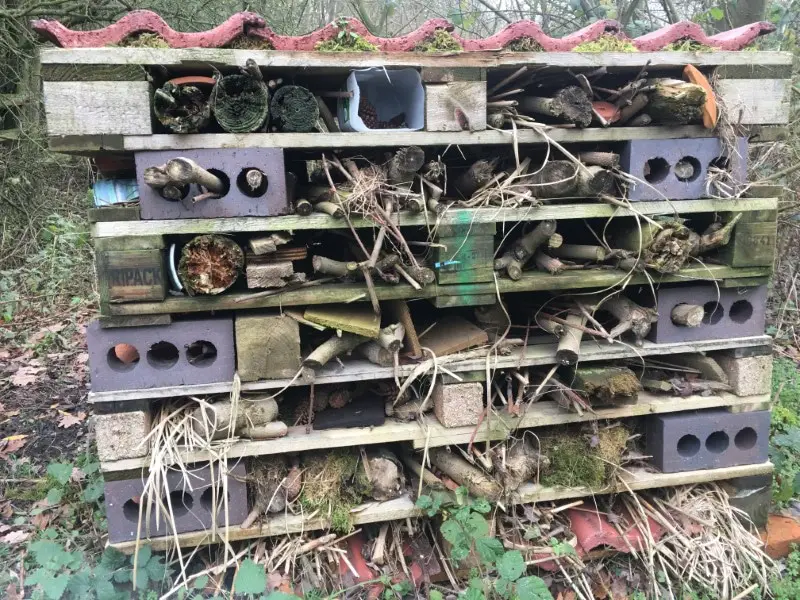
A point to consider is that you are using different kinds of materials without any care for symmetry or uniformity; rather you wish the tubes to be different in terms of their diameter and size.
Trim off the excess that protrudes out too much from the birdbox, making sure that at the end, you have similar-sized tubes to fit inside the house.
To make a more permanent setting that does not dislodge easily, glue the tubes together as you place them into the enclosure.
Once you have built a specialized abode for the little beetles, there is only the task of successfully establishing the ladybugs.
Establishing Ladybugs
A few things to keep in mind while familiarizing the ladybugs with their new home are to remove dust and minimize exposure to wind.
You want your ladybird house elevated to a height that borders with the plants and foliage that’s preferred by the beetles, such as rosebushes.
Adding food particles such as raisins can also help to attract ladybirds.
Also, the location should be such that it’s not directly in sunlight but rather shaded by trees so that it doesn’t get too warm, and in a tilted formation so that if it rains, the water can easily drain out.
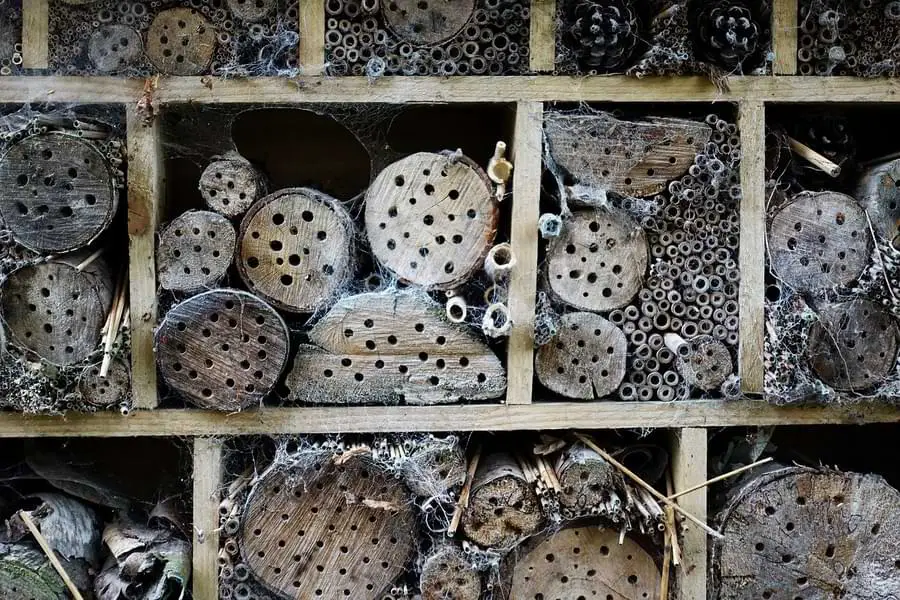
Small Scale Accommodation
Requiring a little more dexterity, this lodging setup is to house small numbers of ladybirds. The tube of choice for the purpose is bamboo which can be easily found available in a number of hardware stores. Find a stalk that is a few diameters in width and runs the length of a foot or half.
From this one single piece, multiple small tubes can be created by sawing the original stalk in half. When cutting, make sure to create slanting ends that would act as canopies for the final products.
Since the tube will be hung from trees and shrubs, you would need to pierce holes at the far ends and twine a thread through for hanging.
To make it especially attractive, fill up the tubes with moist raisins and replenish them as need be. Lastly, find an appropriate plant to hang it on. OR – just buy one off-the-shelf ready-made!
Buying Ladybugs – What Plants to Put in the Habitat
Plan your garden from the beginning in such a way that you’re prepared for anything. Calculate the risk of pest attack and establish countermeasures. If ladybirds are your pesticides of choice, arrange methods to ensure their settlement in your garden.
Consider the foliage in your garden, particularly if you’re looking to employ ladybirds as a means of pest control.
Because the ladybirds will only stay in your garden so long as there is some reason for them to stick around. The presence of Ladybug friendly plants, therefore, plays a critical role in this.
While your crops might be in danger of or are already suffering from an infestation, the other plants in the vicinity would determine if the predators of these pests are present or not.
For such an eventuality, plan ahead and grow plants that would prove alluring to the ladybirds. These can range from a variety of flowering plants to herbs.
Another important detail to consider is that since you’re already planting things to attract ladybirds, think one step ahead and add plants to your garden that would be beneficial to you.
Not only for keeping the ladybirds but also in a domestic and professional capacity. Make a selection that best suits your needs while also delivering extra benefits.
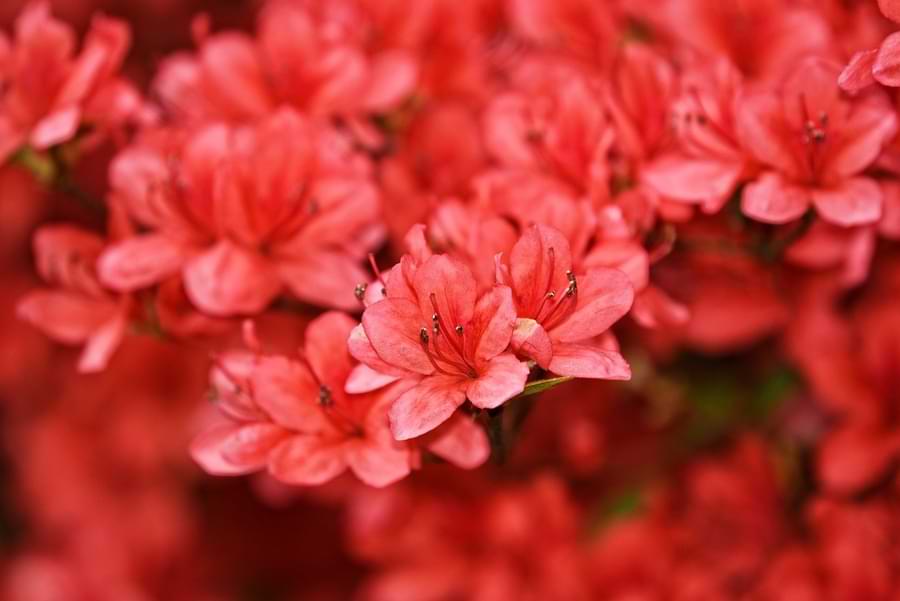
Flower Variety
Ladybirds and other pollinators alike are attracted to Garlic Flowers, which are reasonably easy to grow in a garden. An added advantage is that it wards away certain pests such as flies.
Another flowering plant that is preferred by ladybugs is Geraniums.
An extremely beautiful addition to your garden would be the Blue Button, also known as the Bachelor’s Button. Bearing flowers in lively hues of blue, pink as well as white, it also lures in the beetles.
Hailing from the same family as the Blue Button is the flowering herb of Candela. It attracts ladybirds through the pollen in its edible flowers, making it a vital plant to have in your garden.
You can also consider the clustering flowers of Sweet Alyssum, which are scented and give off a mild fragrance that is quite soothing, while also calling to the ladybirds. You’ll find all these and more in my 52 plants that attract Ladybugs!
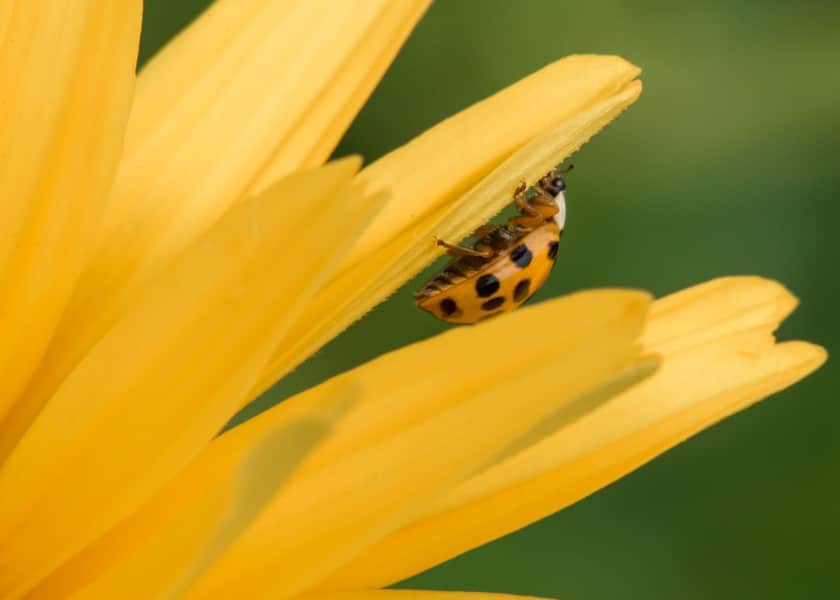
Herbal Choices
Dill is one particular herb that offers a plethora of advantages. Not only does it protect your plants, but it also helps out in other ways as well.
From being used to flavor a variety of dishes to act as a favorite spot for ladybirds, when grown with tomatoes it keeps away the hornworms as well.
Cilantro is more actively used by South Asians to add taste to their cuisine. The hordes of ladybirds cannot resist the sweet smell of this herb.
Therefore making it an auspicious plant to have in your collection. Then there is parsley; an herb that is commonly found in nearly every kitchen garden.
Buying Ladybugs – How to Keep Ladybugs in Your Garden
Those that are new to keeping ladybugs often misinterpret the complexity of such a task. If you let them loose without proper planning, there is a very fine possibility that the insects would choose to fly away.
To harbor the ladybirds extensively in your gardening space, provide them with the things that they like. You might also like my article on how to attract ladybugs into your garden.
Food
Raisins hold some measure of attraction for ladybirds. Moist raisins kept in easily accessible locations can be helpful. Ladybirds are sure to gravitate toward raisins when there’s a shortage of aphids and other soft-bodied insects.
Vegetation
As already discussed extensively, a wide selection of plants can be employed to allow the ladybirds to favor your garden.
Not only are these plants the natural habitat that these insects prefer, but they also have additional qualities that make the ladybirds choose them.
Water
Ladybirds need a water source to hydrate themselves. By providing them with water, either by spraying or dampening the plants, you increase the likelihood of the ladybirds settling down in your garden.
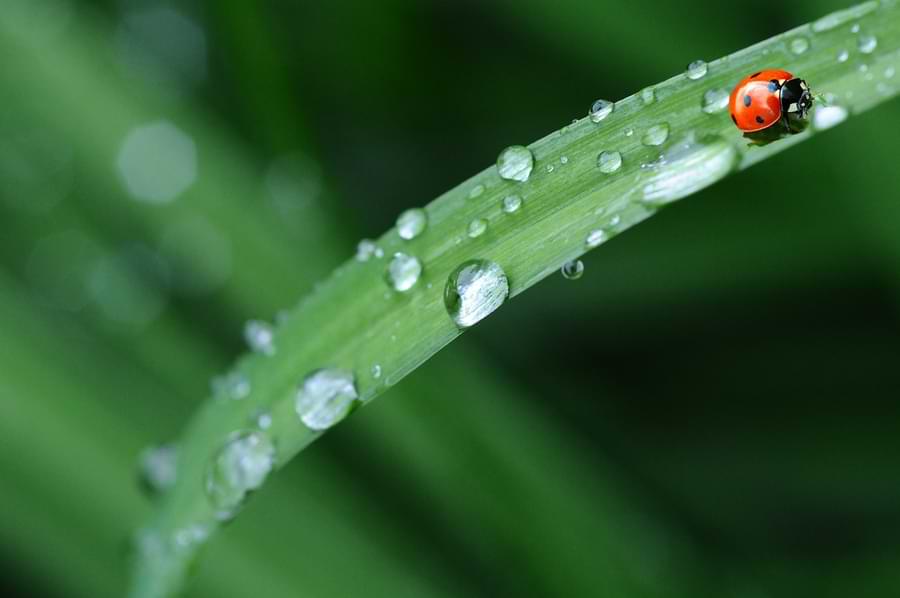
Shaded Enclosure
Ladybirds tend to avoid harsh or direct sunlight. Due to this, it is important to provide them with shaded areas, especially in places where you placed their homes, and don’t forget to release them around dusk for best results.
Provide a Holding Pen
Cover the infected bushes, plants, and other regions for a couple of days by using a tarp, netting or a plastic sheet.
You can release the ladybirds on the plants either before or after covering the area; the main objective is to trap them for a short time and make it difficult for them to fly away before they’ve done the job of eating the pests! I’d recommend this bug net on Amazon
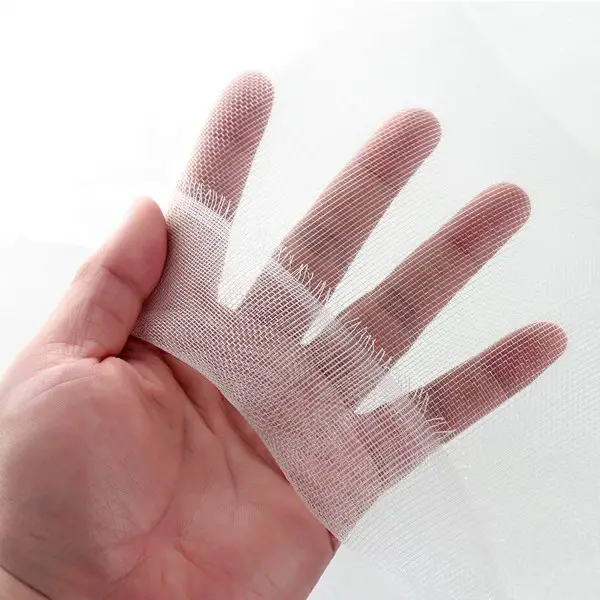
Buying Ladybugs – Related Questions:
Are there some insects in your garden that could prey on the ladybugs? Ladybugs are preyed on by different species of birds as well as insect-eating insects such as wasps, dragonflies, and ants.
Moreover, ladybugs are also susceptible to being preyed upon by tree frogs, parasites, and mites. See the full list here
Are ladybugs a good option as organic pesticides? Each Ladybug can eat up to 75 aphids in a day, making them a great option for controlling the pest infestation in your garden or infested crops.
Are ladybugs a better option for pest control compared to other practices of pest control, such as insecticides and pesticides? Ladybugs are the natural predators of pests and aphids. Unlike, pesticides and insecticides, they don’t harm the plants or the environment in the long run due to exposure to chemicals. Ladybugs are important to us.
Finally, I’ll leave you with this Youtube video of a gentleman releasing ladybugs into the garden. I hope this article was of help to you.

